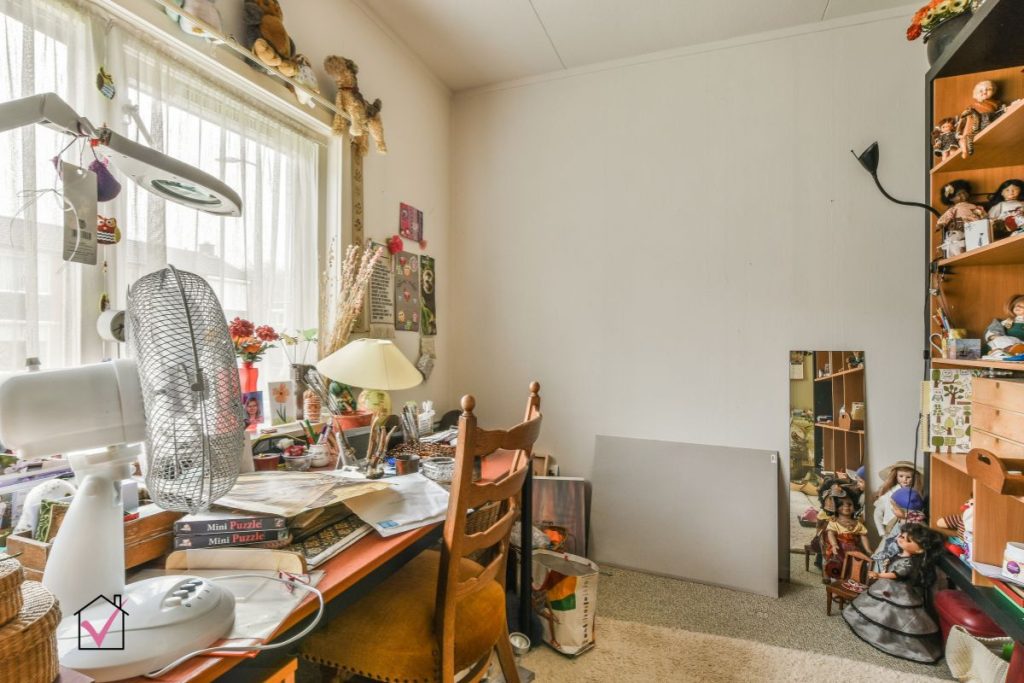How to Reduce Furniture Clutter for a Spacious Room Feel

Creating an Open and Inviting Space
Have you ever walked into a room that felt cramped and chaotic? It’s a common issue in many homes across the United States. A cluttered living space can negatively impact your mood and overall well-being, leading to feelings of anxiety and frustration. The physical environment we inhabit significantly influences our mental state, making it essential to foster spaces that nurture relaxation and comfort.
Reducing furniture clutter not only enhances aesthetics but also promotes functionality in our homes. Here are a few pivotal points to consider when working towards a more open environment:
- Visual Appeal: A spacious environment creates a soothing and inviting atmosphere, akin to a breath of fresh air. Think of a stylishly designed living room with neutral colors and ample natural light—this kind of setting invites guests in rather than pushing them away.
- Mood Improvement: Scientific studies have shown that cleaner, less cluttered spaces result in lower levels of stress and increased focus. Spaces free of distraction encourage creativity and relaxation, turning your home into a tranquil sanctuary.
- Enhanced Functionality: Streamlining your furniture allows for better movement and usability, making everyday tasks easier. For instance, a well-arranged kitchen with only essential appliances can make cooking more enjoyable.
So how do you achieve this ideal room feel? The answer lies in strategic planning and smart decisions. Here are some effective methods that can help:
- Assess Your Needs: Take time to evaluate which furniture pieces genuinely serve a purpose in your home and which can be eliminated. Try a seasonal assessment where you sort items into ‘keep,’ ‘donate,’ and ‘discard’ categories.
- Opt for Multi-Functional Items: Invest in furniture that serves more than one purpose, such as a sofa bed that accommodates guests or an ottoman that provides hidden storage space. This type of versatility is particularly advantageous in smaller living quarters.
- Embrace Minimalism: Adopt a minimalist mindset to control what comes into your space. The philosophy of “less is more” leads to thoughtful purchasing and curates a more serene atmosphere.
By taking deliberate steps to reduce furniture clutter, you can transform your living space into a serene and spacious retreat. Room transformations don’t have to happen all at once; even small tweaks can significantly elevate your space’s invite and accessibility. Ready to explore more? Let’s dive into the specific strategies, such as color theory and lighting tips, that can help you reclaim your home’s tranquility and create an inviting environment.
SEE ALSO: Click here to read another article

Strategic Approaches to Declutter Your Space
When it comes to achieving a spacious room feel, the way you organize and choose your furniture plays a crucial role. Making changes to your living environment starts with intentional decision-making. Focusing on practical strategies can help you create a more open and inviting atmosphere. Below are key approaches that will guide you towards a well-curated space:
- Evaluate Current Furniture: Begin by critically assessing each piece of furniture in your room. Ask yourself if it adds value to your lifestyle or serves a specific need. This straightforward evaluation system calls for a straightforward premise: if an item doesn’t contribute to your enjoyment or functionality, it may be time to let it go. Consider hosting a “furniture audit”—an intensive examination where you walk through each room, listing your essential items and identifying those that could be donated or discarded.
- Maximize Vertical Space: Utilizing wall space is an effective method for minimizing clutter at ground level. Floating shelves and wall-mounted cabinets can house books, decorative items, and storage bins, reducing the necessity for bulky furniture. This also offers ample room for visual flow, which can contribute to an overall feeling of spaciousness. By drawing the eye upwards, you also create a sense of height that most often results in a striking new dimension.
- Consider Scale and Proportion: Furniture selection should be determined by the scale of your room. Large, oversized items can dwarf a small space, resulting in a heavy and overwhelming environment. Conversely, smaller, streamlined furniture pieces can open up a room and encourage movement. When shopping, visualize how each piece will fit into your existing layout—measuring beforehand could alleviate future surprises. It may be worthwhile to establish a “furnishing ratio,” offering guidelines on balancing large and small items for optimum space utilization.
- Implement Smart Storage Solutions: Hidden storage options can maintain a clean and organized aesthetic without sacrificing style. From coffee tables featuring drawers to benches with internal compartments, there are many clever designs available that make clutter management almost effortless. Choosing furniture that aids in keeping belongings neatly tucked away allows you to enjoy more surface space while still having easy access to your essentials.
By embracing these strategies, you will not only enhance the functionality of your space but also create an atmosphere that feels more inviting and free. Remember, the journey to a clutter-free home can be gradual; take the time to find what works best for you. The decisions made during this process will directly contribute to how you experience and interact with your environment on a daily basis.
| Category | Description |
|---|---|
| Multi-Functional Furniture | Utilizing pieces that offer dual purposes, such as sofas with storage or coffee tables that can convert into dining sets, maximizes space while minimizing the need for additional items. |
| Decluttering Before Moving | Before arranging your furniture, it’s vital to remove unnecessary items. Keeping only what you love or need creates a cleaner and more inviting ambience. |
| Vertical Storage | Incorporating shelves and wall-mounted storage frees up floor space, contributing to a more open feel in the room. This design practice is highly advantageous for small areas. |
| Consistent Color Palette | Using a cohesive color scheme throughout your furniture not only enhances aesthetic appeal but also visually expands the space, making it feel larger than it actually is. |
SEE ALSO: Click here to read another article
Embrace Minimalist Design Principles
In the pursuit of a spacious room feel, embracing minimalist design can transform your living space significantly. Minimalism isn’t just a trend; it’s a lifestyle choice that emphasizes simplicity and functionality. By adopting this aesthetic, you can reduce furniture clutter to create an environment that is not only visually appealing but also highly functional. Here are some essential minimalist principles to incorporate:
- Choose Multi-Functional Furniture: Investing in multipurpose furniture is a game-changer in the quest to reduce clutter. For instance, a sleeper sofa can serve as both a comfortable seating area and a guest bed, while an ottoman with storage can double as a coffee table and a hidden space for blankets or magazines. These dual-purpose items allow you to enjoy the benefits of larger furniture without the overwhelming footprint.
- Keep Decor Simple: When styling your space, less is often more. Opt for a few select decorative pieces that resonate with your personal style, rather than overcrowding surfaces with numerous knick-knacks. A single piece of art can become a stunning focal point, drawing attention without the need for excessive adornment. This conscious choice not only minimizes visual clutter but also enhances your room’s overall ambiance.
- Use Color Wisely: The colors you choose can drastically impact how spacious a room feels. Light, neutral shades tend to open up spaces, reflecting light and making an area feel larger. Consider using a consistent color palette throughout the room, with variations in texture or material to maintain interest while keeping the environment cohesive. This also allows for seamless transitions between different zones within the same space.
- Create Defined Zones: In open-plan living spaces, it’s crucial to define separate areas for distinct activities. Whether it’s a reading nook with a chair and small bookshelf or a dedicated workspace with a desk and chair, having clear zones helps in organizing furniture. Clear boundaries eliminate the tendency to overcrowd a single area and allow each section to breathe, enhancing the spacious effect.
While implementing these minimalist principles, consider the concept of negative space—the empty space around and between objects. Emphasizing negative space can help separate furniture arrangements, making each piece stand out and contributing to an airy atmosphere. This approach encourages the eye to move freely around the room, creating a naturally open feel that invites relaxation.
Integrate Technology for Clutter Reduction
In today’s digital era, technology can also play an important role in reducing furniture clutter. Smart devices can help streamline your living environment. For instance, a wall-mounted television can eliminate the need for bulky entertainment units. Additionally, smart storage solutions like digital organization apps can aid in decluttering physical spaces by helping you keep track of items or tasks. This fusion of technology and design can help maintain a tidy, spacious feel in your home.
By leveraging these minimalist design principles and smart technology, you can easily pave the way toward a room that feels expansive and light. The fewer distractions you have in your living space, the more serene your environment will become, allowing for greater enjoyment and comfort in your daily life.
CHECK OUT: Click here to explore more
Final Thoughts on Reducing Furniture Clutter
In the quest for a more spacious room feel, incorporating effective strategies to reduce furniture clutter is essential. By embracing minimalist design, you open the door to an environment that promotes tranquility and functionality. Remember, the presence of multi-functional furniture can serve both practical and aesthetic purposes, helping you maximize your space without compromising on style. Additionally, keeping decor simple and using color wisely will not only help in minimizing clutter but also enhance the overall ambiance of your home.
Defining zones within an open layout allows for both organization and a sense of spaciousness, while understanding the importance of negative space further contributes to the feeling of airiness in each room. Furthermore, in today’s tech-savvy world, leveraging smart storage solutions can streamline your home life, making it easier to maintain a clutter-free environment.
Ultimately, the path to achieving that expansive sensation lies in the decisions you make about your space. By consciously selecting furniture and decor that aligns with a minimalist philosophy, you can cultivate a home that is not only visually appealing but also calming and inviting. As you embark on your journey to declutter, keep in mind that a well-organized space can lead to a clearer mind. Explore these strategies further and discover how you can transform your living areas into serene retreats that support your lifestyle.


